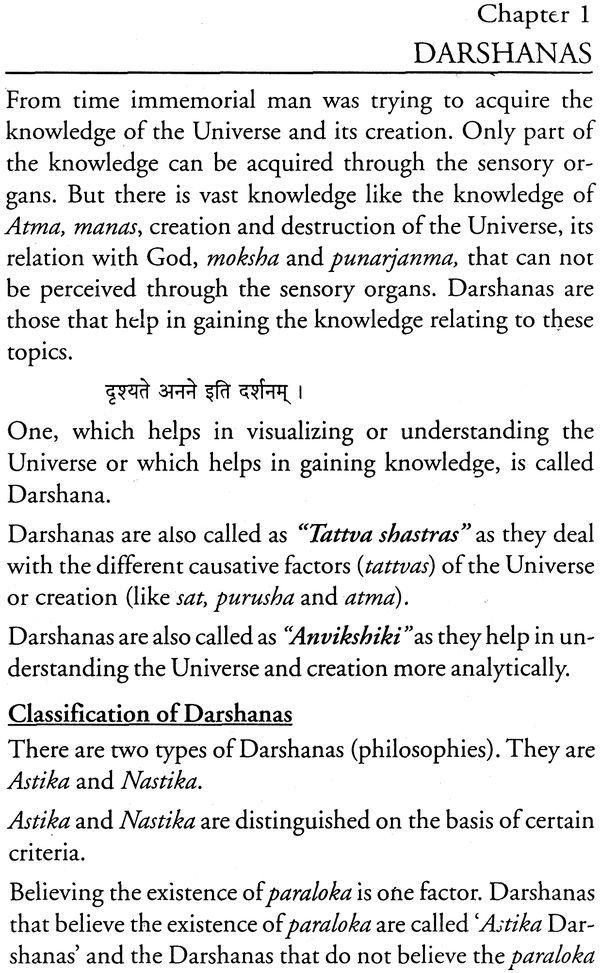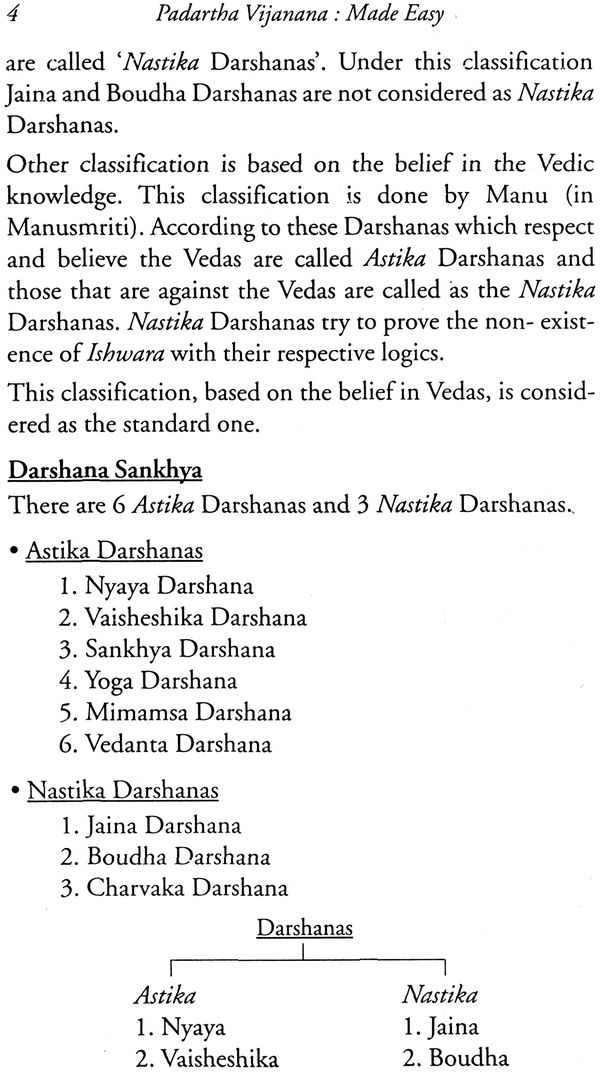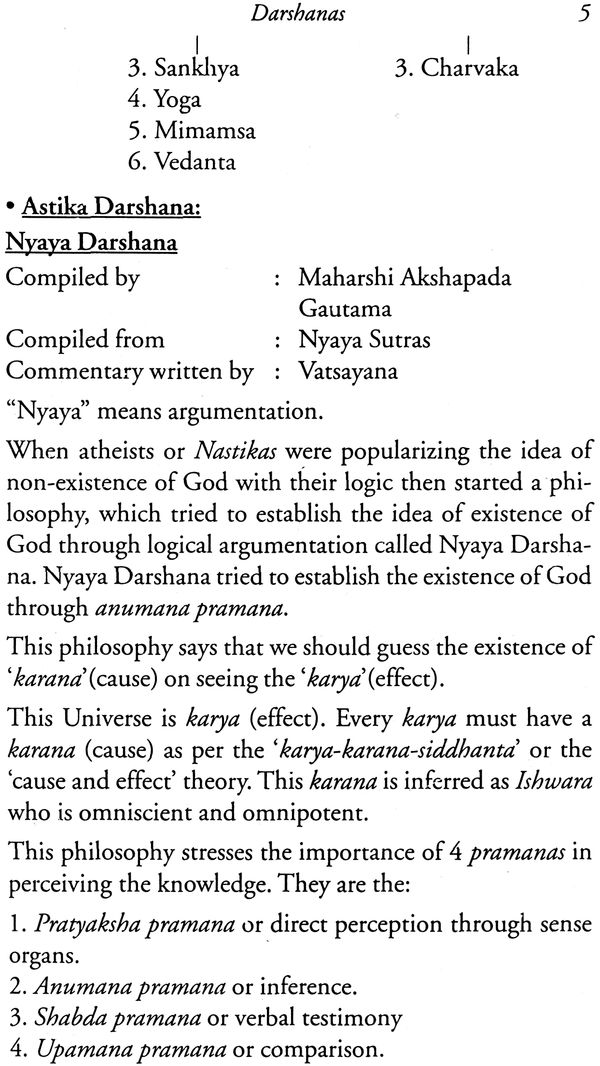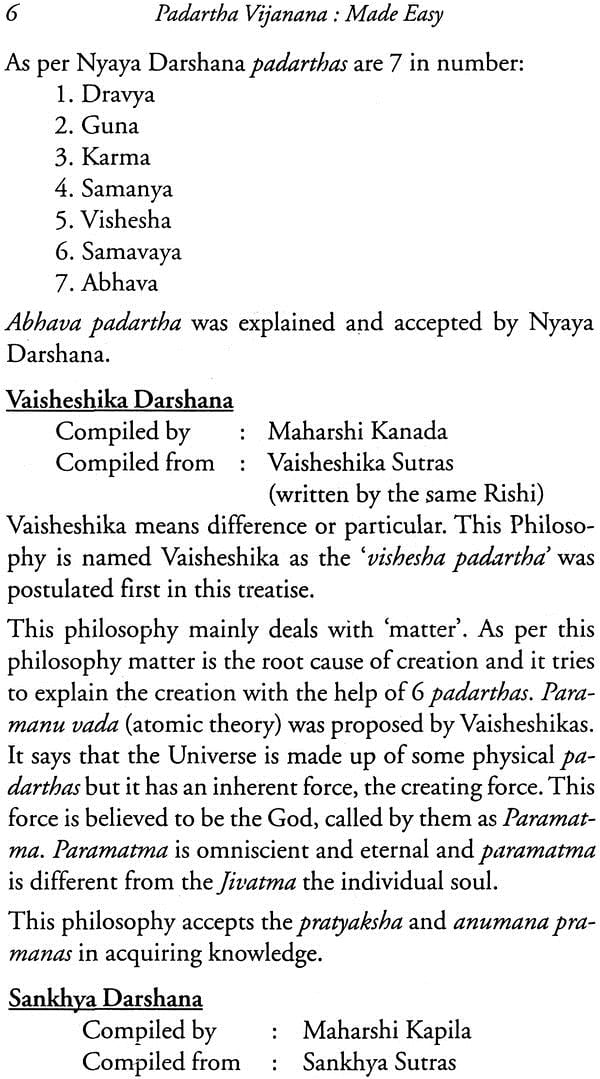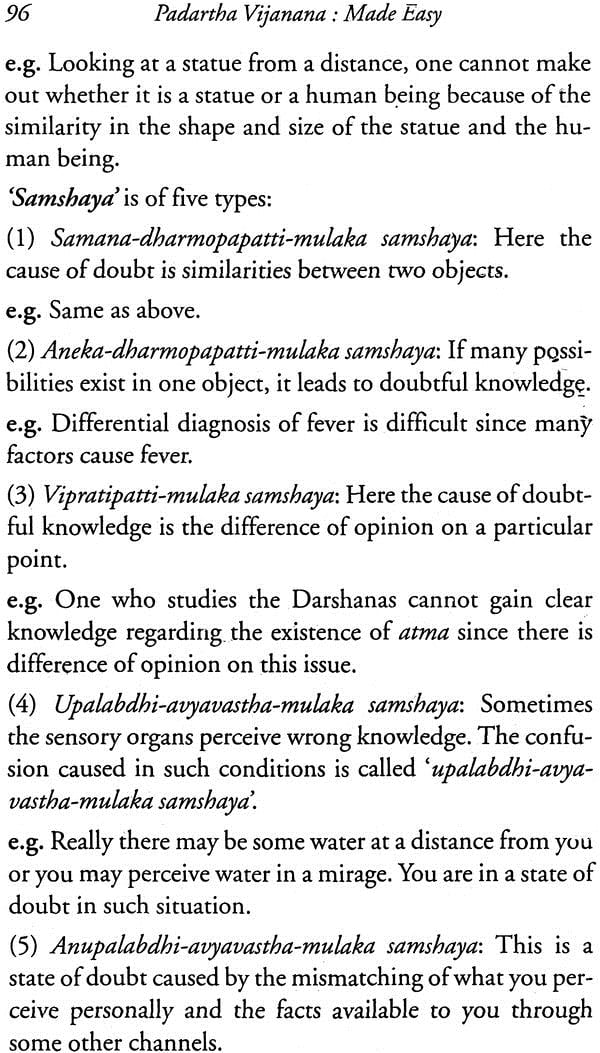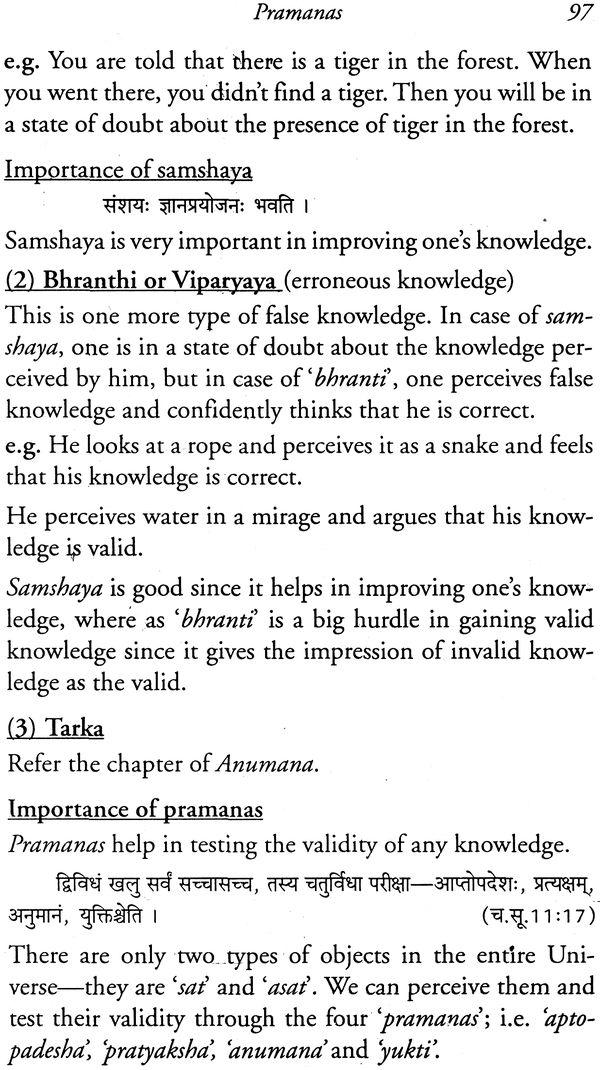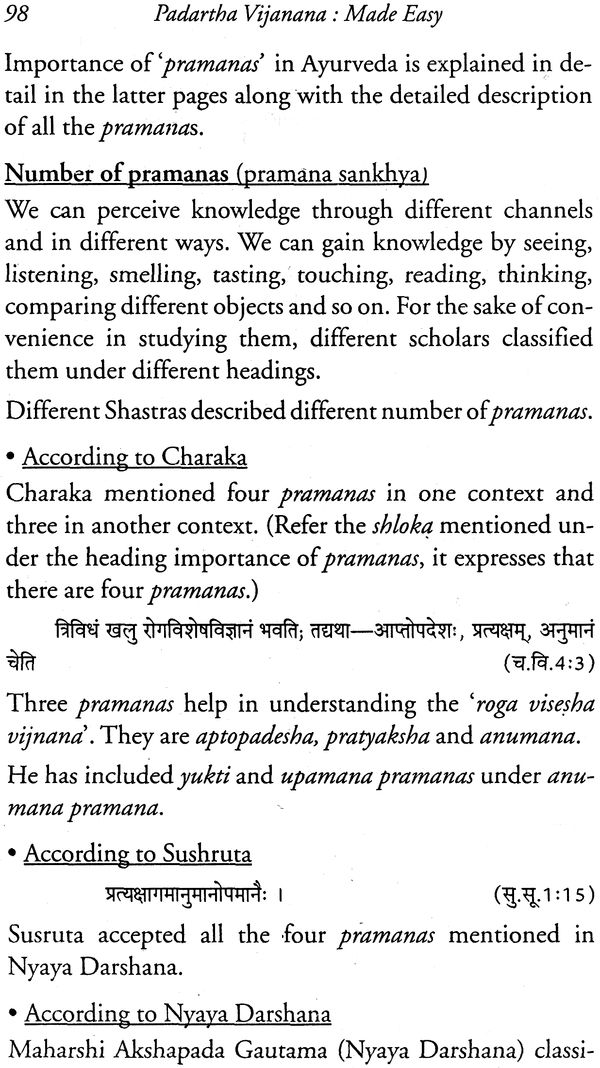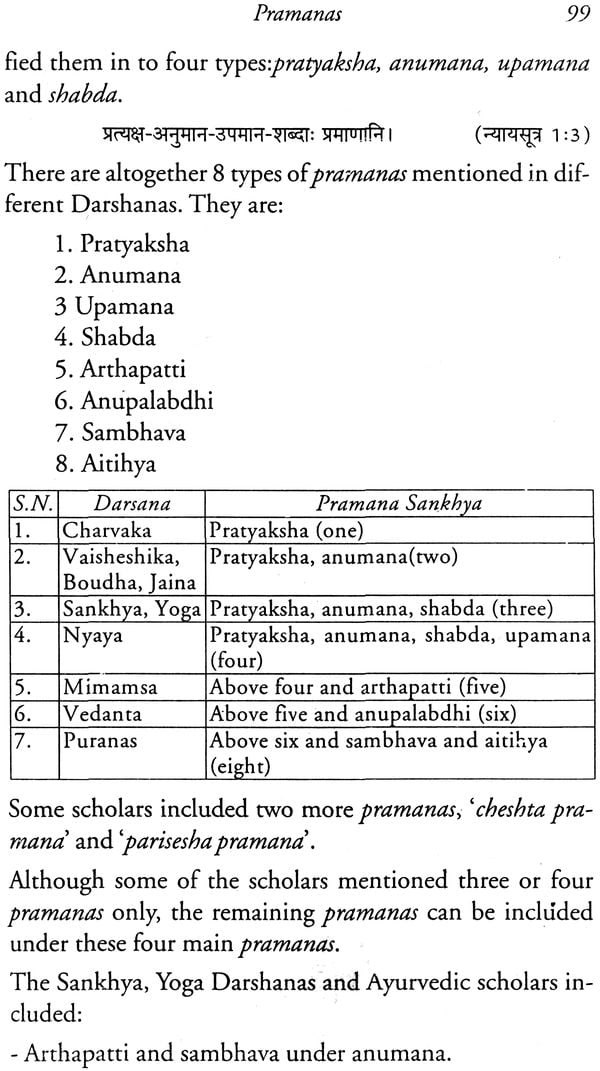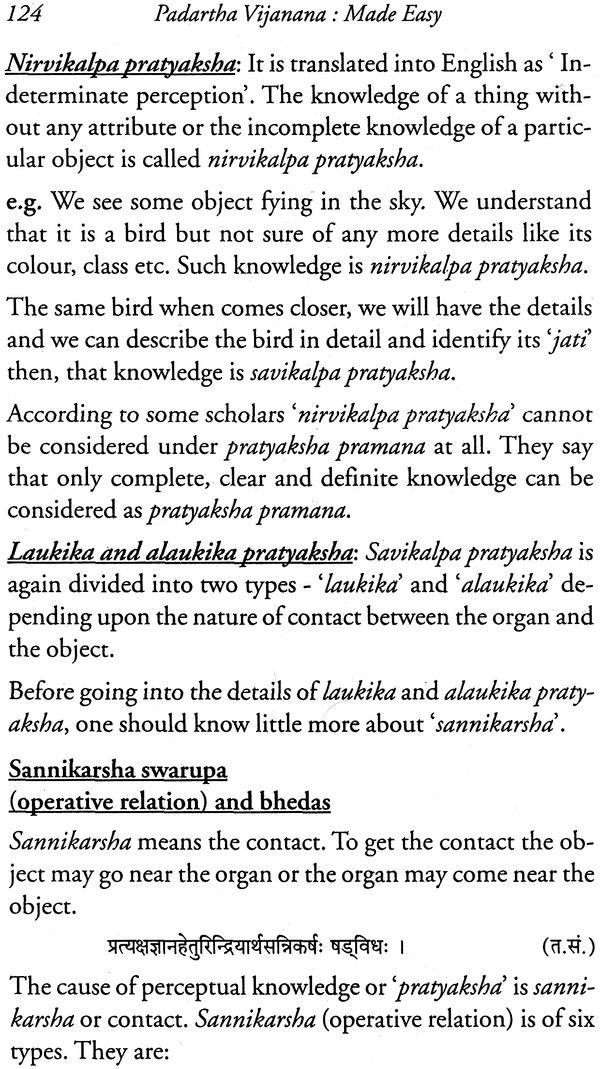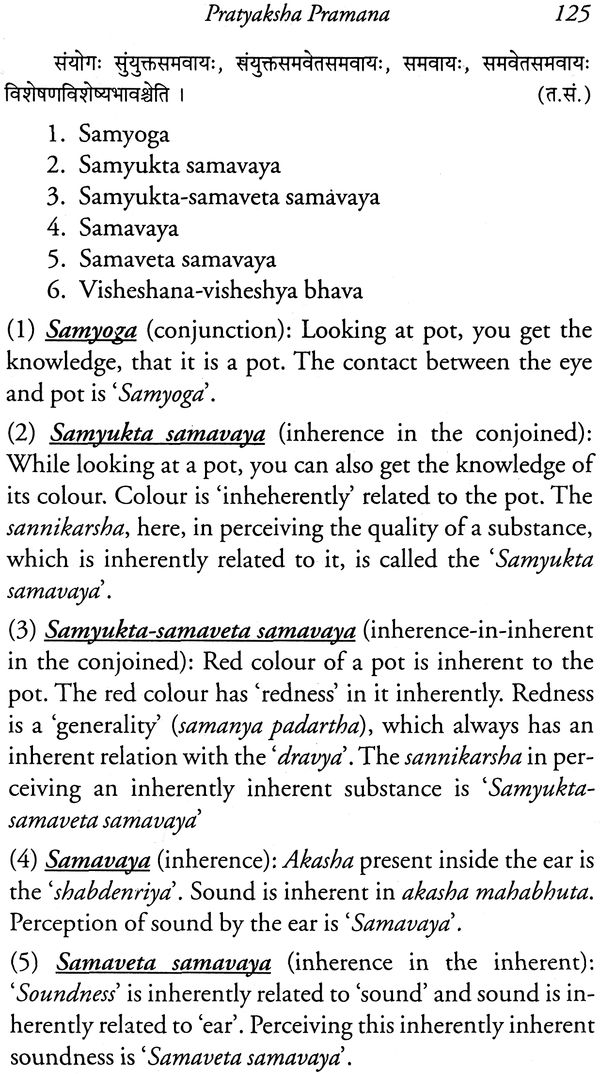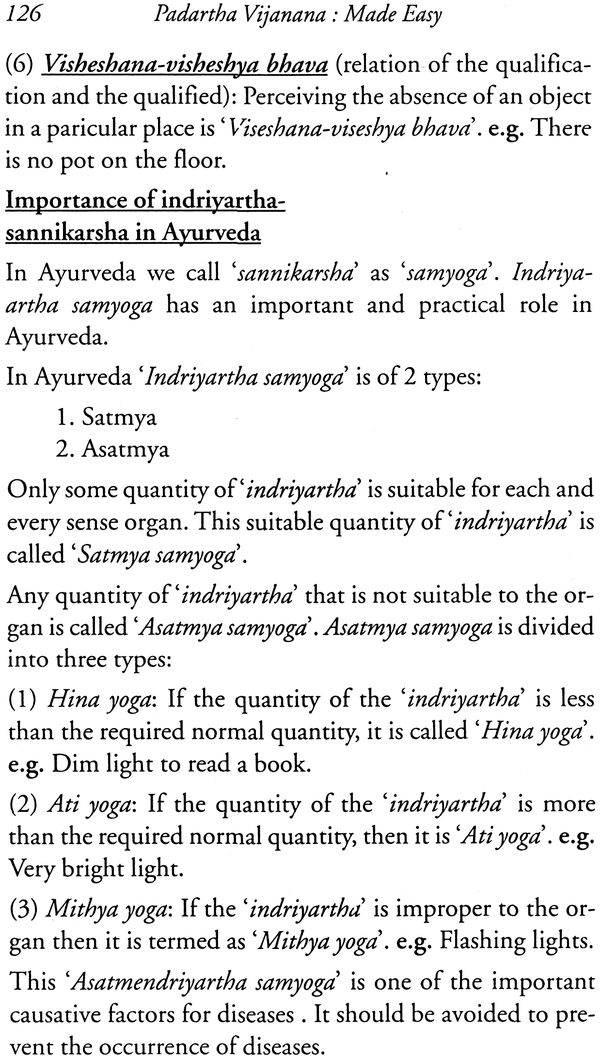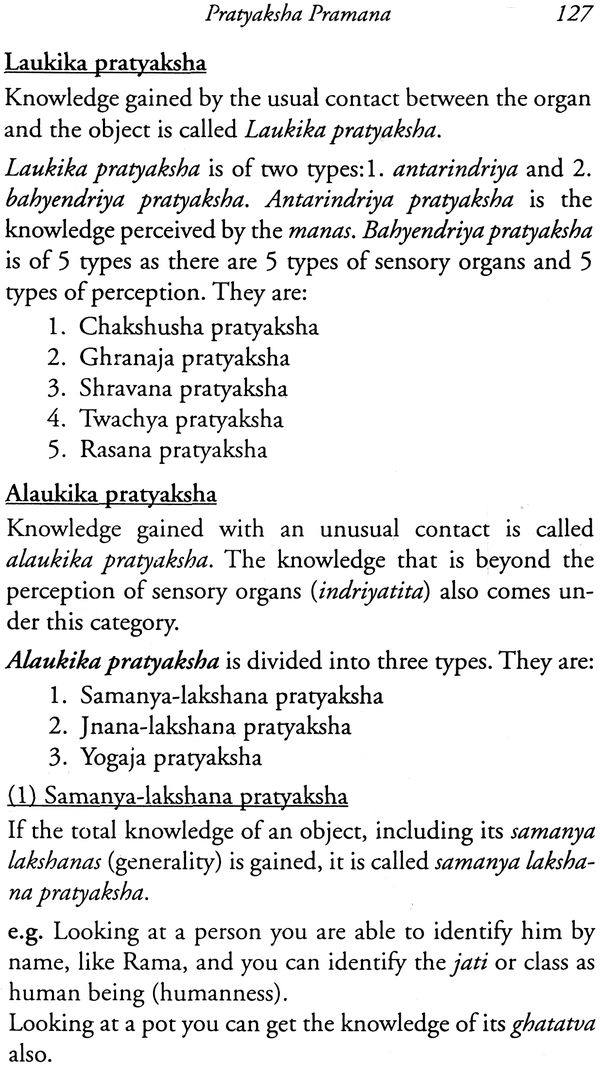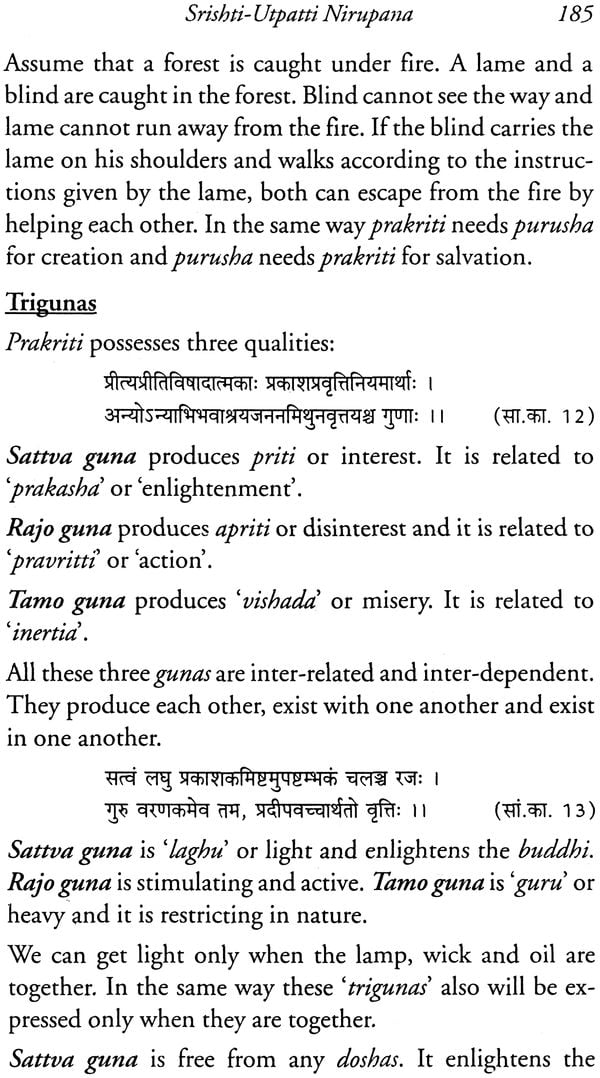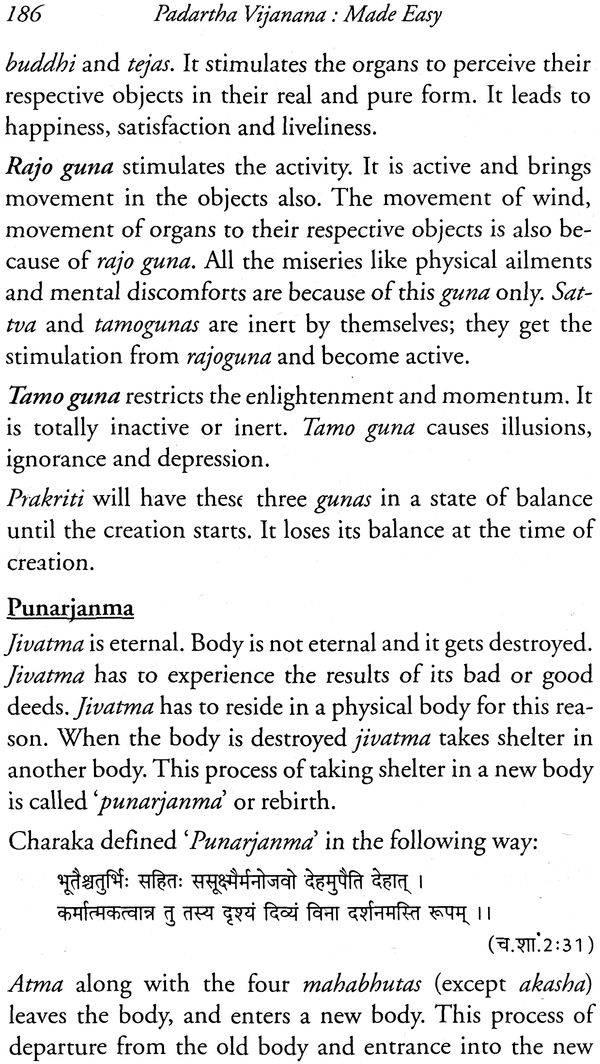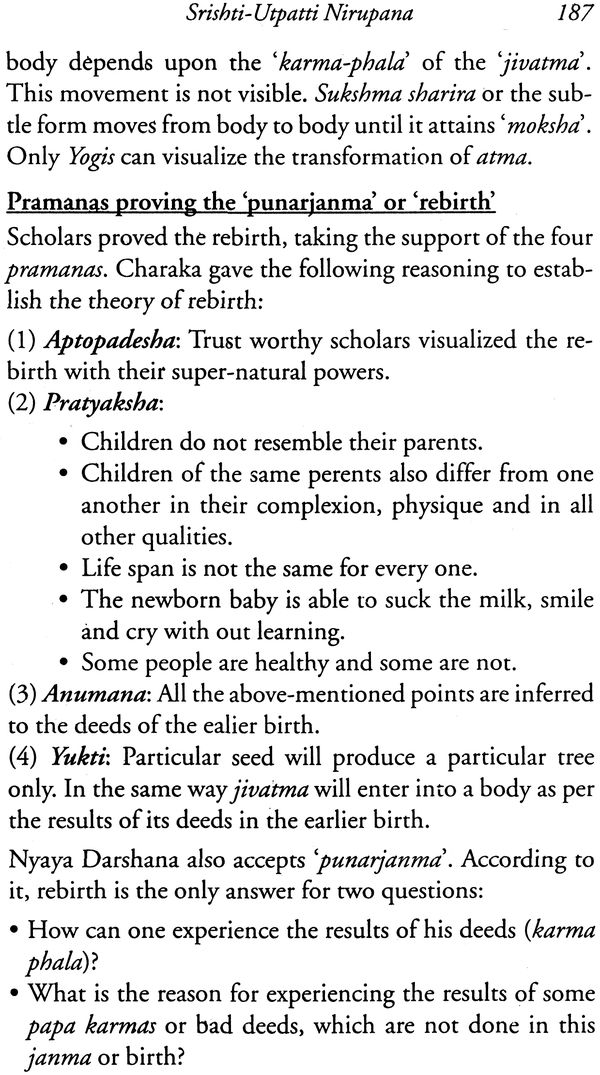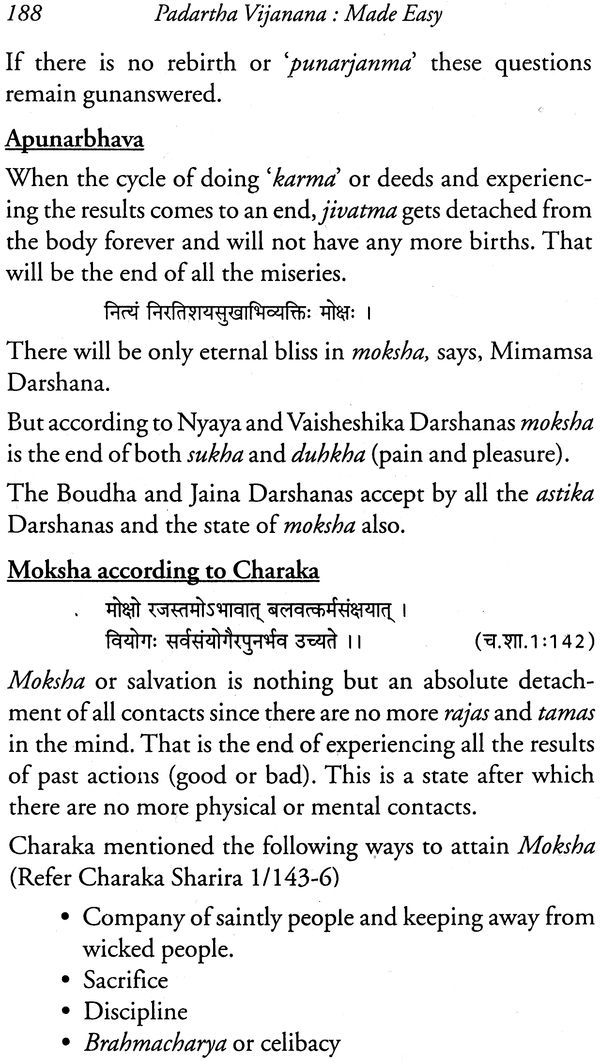
Padarth Vijnan Made Easy
Book Specification
| Item Code: | IHK079 |
| Author: | Gayatri Devi |
| Publisher: | Chaukhamba Sanskrit Pratishthan |
| Edition: | 2015 |
| ISBN: | 8170842231 |
| Pages: | 243 |
| Cover: | Paperback |
| Other Details | 8.4 inch X 5.2 inch |
| Weight | 260 gm |
Book Description
Foreword
I would like to share with you my feelings that led me to write this book on Padartha Vijnana.
I joined BAMS in 1977. All the subjects in the first years of the course were totally new to me and also to all my classmates. We all studied subjects like Botany and Zoology from our high school level. As we went higher and higher in our education we learnt more and more of those subjects in detail. As there was foundation from school level we didn’t feel uncomfortable with those subjects.
But none of the Ayurvedic subjects were taught in any of the schools or junior colleges. (For many of you, even the Sanskrit language may be totally new). Naturally, I could not easily learn the new subjects with full of new terminology. In addition, we hardly had any simple and interesting textbook. I had a very difficult time and even thought of leaving the course and do some other graduation. (Today, ofcourse, I am very proud of being an Ayurvedic physician and whatever I am today, it is because of graduation in Ayurveda). At that time I had decided that I should take up teaching line in Ayurveda and generate interest in the subject to the students.
Surprisingly I got a chance to teach Padartha Vijnana (subject that made me feel miserable in my first year of BAMS) for the first years in Ayurvedic College in Chennai. I could successfully fulfill my dream of creating interest in my students in this (considered to be) fairly dry subject. None of my students were either afraid of the subjects or of the final exams in the subject. Every years I taught the subject I could produce 98% success in the subject.
My students were forced to follow only may notes for the subject, as there were no textbooks on Padartha Vijnana in English covering the syllabus suitable for students. They started asking me to write a book on Padartha Vijnana. This book is the result of such continuous suggestions.
All the topics covered in this subject, Padrtha Vijnana help you through out your degree course, in learning Ayurvedic anatomy, physiology, pathology, diagnosis, treatment etc. So develop interest in the subject and learn thoroughly. This subject is the gateway of Ayurveda.
This book is written keeping in view of your syllabus. Although this book is good enough for your exams, I advise you to read the original texts, wherever there are references to get the complete feel of the subject. I hope all of you will find this book useful in understanding the subject and getting through the examination successfully.
| | |
| DARSHANAS | |
| Classification of Darshanas | 3 |
| Darsana sankhya (enumeration) | 4 |
| Astika Darshanas | |
| Nyaya Darshana | 5 |
| Vaisheshika Darshana | 6 |
| Sankhya Darshana | 6 |
| Yoga Darshana | 7 |
| Mimamsa Darshana | 8 |
| Vedanta Darshana | 9 |
| Nastika darshanas | |
| Jaina Darshana | 10 |
| Boudha Darshana | 10 |
| Charvaka Darshana | 11 |
| Raseshwara Darshana | 12 |
| Importance of Darshanas in Ayurveda | 12 |
| Independent interpretations of Ayurveda | 13 |
| Importance of Padartha-vijnana in Ayurveda | 13 |
| Padartha | 14 |
| Padartha lakshanas (characteristics) | 15 |
| Classification of Padarthas | 16 |
| Sadharmya-Vaidharmyas of Padarthas | 16 |
| Padarthas in Ayurveda (According to Charaka) | 17 |
| Padarthas in Ayurveda (According to Charaka) | 17 |
| Questions | 18 |
| Chapter 2 | |
| DRAVYA (Substance) | |
| Dravya lakshanas (qualities) | 19 |
| Dravya sankhya (enumeration) | 19 |
| Dravya bhedas (classification) | 20 |
| Karya Dravyas | |
| Chetana dravyas | 20 |
| Achetan dravyas | 21 |
| Karana dravyas | |
| Prithivi | 22 |
| Qualities of prithivi | 22 |
| Prithivi bhedas (classification) | 23 |
| Jala | 23 |
| Qualities of jala | 24 |
| Jala bhedas | 24 |
| Tejas | 25 |
| Agni lakshanas (qualities) | 25 |
| Agni bhedas (classification) | 26 |
| Vayu | 26 |
| Vayu lakshanas (qualities) | 27 |
| Vayu bhedas (classification) | 27 |
| Akasha | 28 |
| Gunas or qualities of akasha | 28 |
| Pancha Mahabhuta Nirupana | |
| Bhuta | 29 |
| Mahabhuta | 29 |
| Panchamahabhuta utpatti and paraspara anupravesha | 30 |
| Attributes or gunas of mahabhutas | 31 |
| Vishesha gunas | 31 |
| Bhoutika gunas | 31 |
| Mahabhutas and Sattvadi gunas | 32 |
| Mahabhutas and Tridoshas | 33 |
| Relationship between Panchamahabhutas and the organs in a body | 33 |
| Pancha-panchikarana | 34 |
| Importance of Panchamahabhutas in Ayurveda | 35 |
| Atma (Soul) | |
| Paramatma-Jivatma | 35 |
| Differences between Jivatma and Paramatma | 36 |
| Purusha | 37 |
| Synonyms of purusha | 37 |
| Purusha lakshanas | 37 |
| Samyoga purusha | 38 |
| Dwidhatuja purusha | 38 |
| Tridhatuja purusha | 38 |
| Shad dhatuja purusha | 39 |
| Chaturvimsati (24) tattvatmaka purusha | 39 |
| Panchavimsati (25) tattvatmaka purusha | 40 |
| Karma purusha | 40 |
| Cikitsya purusha | 40 |
| Sukshma purusha | 40 |
| Ativahika purusha | 41 |
| Manas (mind) | |
| Location of Manas | 42 |
| Lakshanas of Manas | 42 |
| Gunas or qualities of Manas | 43 |
| Vishayas (objects) and karmas (functions) of manas | 44 |
| Kala (time) | |
| Kala shabda nirukthi (derivation of the word kala) | 44 |
| Description of Kala | 45 |
| Classification of Kala | 46 |
| Importance of Kala in Ayurveda | 47 |
| Disha (direction) | |
| Samanya gunas (general qualities) | 49 |
| Differences between Akasha and Disha | 50 |
| Differences between Disha and Kala | 50 |
| Importance of Disha in Ayurveda | 50 |
| Tamas dravyatva khandanam | 51 |
| Questions | 53 |
| Chapter 3 | |
| GUNA VIJNANA | |
| Lakshanas of gunas | 54 |
| Classification of gunas | 54 |
| Vaishehika gunas | 55 |
| Paradi samanya gunas | 57 |
| Atmagunas | 59 |
| Gurvadi gunas | 62 |
| Sadharmya-vaidharmyas of gunas (similarities and differences) | 68 |
| Importance of gunas | 70 |
| Corelation between the 24 gunas mentioned by Nyaya, Vaiseshika philosophies and 41 gunas mentioned by Charaka | 71 |
| Questions | 73 |
| Chapter 4 | |
| KARMA VIJNANA | |
| Lakshanas of karma | 75 |
| Karma bhedas (classification) | 76 |
| Bhoutika or laukika karmas | 76 |
| Karma bhedas as per Nyaya Darshana | 77 |
| Karma as per Ayurveda | 78 |
| Questions | 79 |
| Chapter 5 | |
| SAMANYA (Generality) | |
| Lakshanas of Samanya | 80 |
| Samanya bhedas | 81 |
| Practical application of samanya in Ayurveda | 81 |
| Questions | 82 |
| Chapter 6 | |
| VISESHA | |
| Lakshanas of vishesha | 84 |
| Differences between samanya and vishesha | 84 |
| Vishesha as per Ayurveda | 84 |
| Pravrittirubhayas tu | 85 |
| Questions | 85 |
| Chapter 7 | |
| SAMAVAYA (Inherence) | |
| Samavaya lakshanas | 87 |
| Samavaya as per Ayurveda | 87 |
| Questions | 88 |
| Chapter 8 | |
| Abhava (Negation) | |
| 1. Pragabhava (antecedent negation) | 89 |
| 2. Pradhvamsabhava (destruction) | 89 |
| 3. Atyantabhava (absolute negation) | 89 |
| 4. Anyonyabhava (reciprocal negation) | 90 |
| Samayikyabhava | 90 |
| Samsargabhava | 90 |
| | |
| Chapter 1 | |
| PRAMANAS | |
| Prama | 93 |
| Karana | 94 |
| Aprama | 95 |
| 1. Samshaya | 95 |
| 2. Bhranthi or Viparyaya (erroneous knowledge) | 97 |
| 3. Tarka | 97 |
| Importance of pramanas | 97 |
| Number of pramanas (pramana sankhya) | 98 |
| Pramana is ‘pariksha’ in Ayurveda | 100 |
| Questions | 100 |
| Chapter 2 | |
| APTOPADESHA | |
| Definition | 101 |
| Apta lakshanas | 101 |
| Importance of aptopadesha in Ayurveda | 102 |
| Agama pramana | 102 |
| Nighantu pramana | 103 |
| Aitihya pramana | 103 |
| Shabda pramana | 103 |
| Shabda lakshanas and bhedas | 104 |
| Shabdartha bodhaka vritti | 105 |
| Vakya-vishleshana | 106 |
| Shabda and shabda utpatti (generation of sound) | 107 |
| Shakti (signifying power) | 109 |
| Shakti graha | 109 |
| Shakti grahaka | 109 |
| Questions | 110 |
| Chapter 3 | |
| PRATYAKSHA PRAMANA (Perception) | |
| Indriya (organ) | 111 |
| Artha (object) | 111 |
| Sannikarsha (contact) | 111 |
| Pratyaksha lakshanas (characteristics) | 112 |
| Jnanotpatti (perception of knowledge) | 113 |
| Jnanotpatti prakara | 113 |
| Indriya swarupa and lakshanas | 115 |
| Jnanendriyas | 116 |
| Karmendriyas | 116 |
| Ubhayendriya | 116 |
| Indriya vishayas | 116 |
| Indriya bhautikatwa | 117 |
| Pancha panchaka | 118 |
| Indriya vritti (functions of the organs) | 120 |
| Trayodasha karanas | 120 |
| Functions and Importance of antahkarana | 121 |
| Antahkarana chatushtaya | 122 |
| Pratyaksha bhedas (classification of pratyaksha pramana) | 122 |
| Savikalpa pratyaksha | 123 |
| Nirvikalpa pratyaksha | 123 |
| Laukika and alaukika pratyaksha | 124 |
| Sannikarsha swarupa (operative relation) and bhedas | 124 |
| Importance of indriyartha-sannikarsha in Ayurveda | 126 |
| Laukika pratyaksha | 126 |
| Alaukika pratyaksha | 126 |
| -Samanya-lakshana pratyaksha | 127 |
| -Jnana-lakshana pratyaksha | 127 |
| -Yogaja pratyaksha | 128 |
| Pratyasatti yojana | 128 |
| Vedana - adhishthana, hetu and vedananasha hetu | 129 |
| Indriya prapyakarita | 130 |
| Pratyaksha: Modern aids | 130 |
| Necessity of other pramanas | 130 |
| Factors restricting the pratyaksha pramana | 131 |
| Application of pratyaksha pramana in Ayurveda | 133 |
| Questions | 134 |
| Chapter 4 | |
| ANUMANA PRAMANA (Inference) | |
| Paramarsha | 135 |
| Anumana lakshanas according to Charaka | 136 |
| Classification of anumana in general | 136 |
| 1. Swartha anumana | 136 |
| 2. Parartha anumana | 136 |
| Classification of anumana (Charaka) | 137 |
| Anumana pramana according to Nyaya Darshana | 137 |
| Comparision between the anumanas proposed by Charaka and Nyaya Darshana | 139 |
| Panch avayavas (five syllogisms) | 139 |
| Linga (mark) paramarsha | 140 |
| 1. Kevalanvayi | 140 |
| 2. Kevala vyatireki | 141 |
| 3. Anvaya vyatireki | 141 |
| Hetu | 142 |
| Hetwabhasa (defective reason) | 143 |
| Hetwabhasa bhedas | 143 |
| Saddhetu | 145 |
| Vyapti bhedas | 146 |
| Drishtanta | 147 |
| Tarka (false assumption) | 147 |
| Application of anumana in Ayurveda | 149 |
| Questions | 150 |
| Chapter 5 | |
| YUKTI (Reasoning) | |
| Yukti-lakshanas (characteristics) | 151 |
| Questions | 152 |
| Chapter 6 | |
| UPAMANA (Analogy) | |
| Nirukti | 153 |
| Upamana is an independent pramana, | 154 |
| Upamana lakshanas (characteristics) | 154 |
| Upamana bhedas | 155 |
| Application of upamana in Ayurveda | 156 |
| Questions | 156 |
| Chapter 7 | |
| ARTHAPATTI (implied meaning) | |
| Anupalabdhi or Abhava pramana (non-apprehension) | 158 |
| Sambhava pramana (inclusion) | 158 |
| Cheshta pramana (gesture and posture) | 158 |
| Parishesha pramana (elimination) | 159 |
| Questions | 159 |
| Chapter 8 | |
| KARYA-KARANA BHAVAS (Cause & Effect Theory) | |
| Karana lakshanas (characteristics) | 160 |
| 1. Purva bhava (antecedance) | 160 |
| 2. Nityatva (invariability) | 161 |
| 3. Ananyathasiddhi (unconditionality) | 161 |
| Karana bhedas (classification) | 162 |
| 1. Samavayi karana (inherent cause) | 162 |
| 2. Asamavayi karana (non-inherent cause) | 162 |
| 3. Nimitta karana | 163 |
| Relation between the karana and the karya | 163 |
| Satkaryavada | 164 |
| Parinamavada | 166 |
| Vivartavada | 166 |
| Asatkaryavada | 167 |
| Paramanuvada | 168 |
| Kshanabhangura vada | 169 |
| Pakaja gunas | 169 |
| Pilupaka vada (baking of atoms) | 170 |
| Anekantavada | 171 |
| Karya-karana sambandha in Ayurveda | 172 |
| Questions | 173 |
| Chapter 9 | |
| SRISHTI UTPATTI NIRUPANA (Creation) | |
| Shrishti-uptatti (creation of the Universe) | 174 |
| Prakriti | 176 |
| Prakriti lakshanas (characteristics) | 176 |
| Mahattatva | 177 |
| Ahamkara | 177 |
| Indriyas | 177 |
| Pancha tanmatras | 178 |
| Pancha mahabhutas | 178 |
| Tattva-vargikarana (classification) | 178 |
| Shrishti-krama accepted by Ayurveda | 178 |
| Kshetra-kshetrajna | 181 |
| Vyakta-avyakta | 182 |
| Pralaya (destruction) | 183 |
| Sadharmya-vaidharmyas between prakriti and purusha | 183 |
| Prakriti-purusha samyoga karana | 184 |
| Trigunas | 186 |
| Punarjanma | 186 |
| Pramanas proving the ‘punarjanma’ or ‘rebirth’ | 187 |
| Apunarbhava | 188 |
| Moksha according to Charaka | 188 |
| Questions | 189 |
| Chapter 10 | |
| TANTRAYUKTI VIJNANA (Techniques of Exposition) | |
| Usefulness of tantrayuktis | 191 |
| Necessity of tantrayuktis | 191 |
| Three aspects of tantrayuktis | 192 |
| Tantra gunas | 192 |
| Tantra doshas | 193 |
| Tantrayuktis | 196 |
| Vyakhyana | 205 |
| Kalpana | 208 |
| Ashrayas | 209 |
| Tachchhilyas | 213 |
| Questions | 216 |
| Multiple Choice Questions | |
| (For PG Entrance and Public Service Commission Tests) | 217 |
| Answers to MCQs | 227 |
| Bibliography | 228 |
